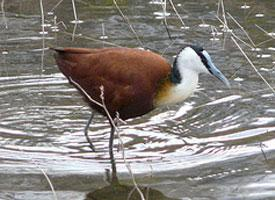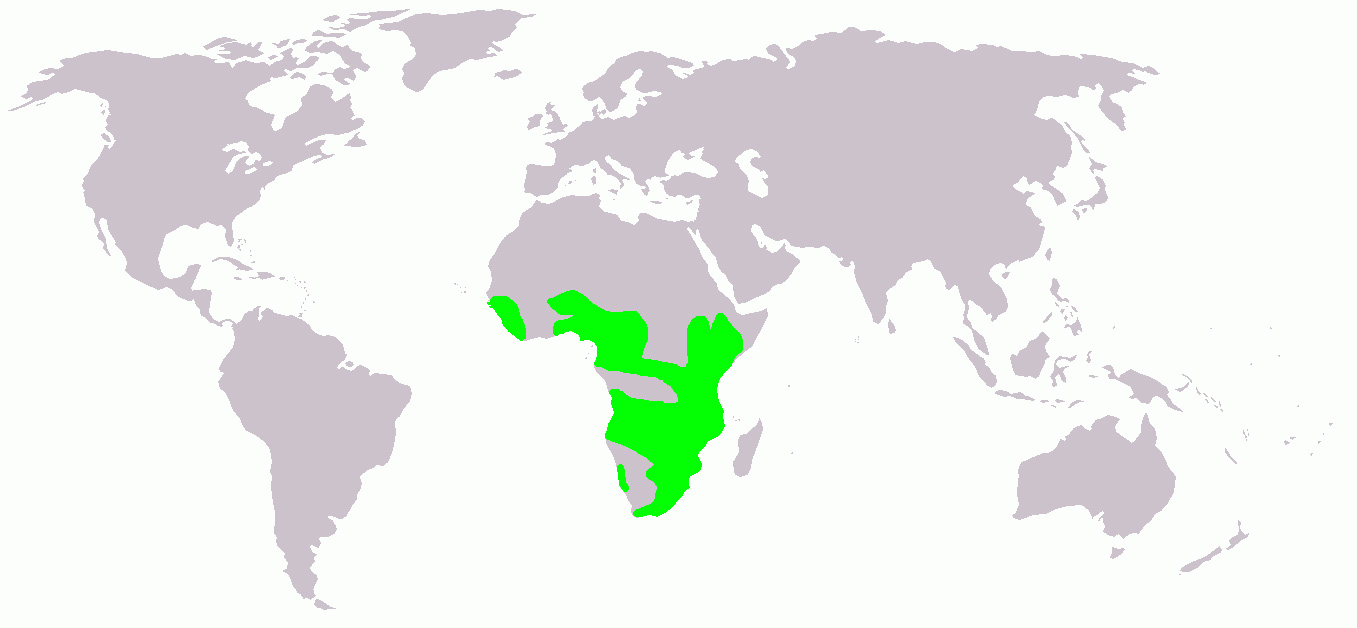
Greutăți și măsuri
| Lungime | 30 cm |
|---|
Descrierea animalului
The African jacana (Actophilornis africanus) is a fascinating and unique bird species, native to the wetlands of sub-Saharan Africa. This bird is particularly known for its distinctive appearance and remarkable adaptations that allow it to thrive in its aquatic habitat.Adult African jacanas are medium-sized birds, with a body length ranging from 23 to 30 centimeters and a wingspan of approximately 50 to 60 centimeters. They have a striking plumage, with the back feathers being a rich chestnut color, while the underparts are predominantly white. Their wings are adorned with patches of black and white, and during flight, the bright blue primary feathers become visible, adding a splash of color. One of the most eye-catching features of the African jacana is its long toes and claws. These specialized adaptations enable the bird to distribute its weight effectively over a large area, allowing it to walk on floating vegetation without sinking, earning it the nickname "Jesus bird" for its ability to seemingly walk on water.
The head of the African jacana is adorned with a frontal shield, which is a waxy, yellowish growth that adds to its distinct appearance. Both males and females look similar, but the females are noticeably larger, a trait that is relatively uncommon among bird species.
African jacanas are highly adapted to a life centered around water. They are primarily found in freshwater wetlands, such as lakes, ponds, and swamps, where floating vegetation is abundant. Their diet consists mainly of insects and other invertebrates, which they pick from the surface of leaves or water. They are also known to consume seeds and other plant material occasionally.
One of the most interesting aspects of the African jacana's behavior is its polyandrous mating system, where one female mates with multiple males. The female takes the lead in courtship and territory defense, while the males are responsible for incubating the eggs and raising the young. This role reversal is quite unique in the avian world. The female lays her eggs in a floating nest, which is constructed and guarded by the male. The eggs are camouflaged to blend in with the surrounding vegetation, providing protection from predators.
The African jacana's ability to navigate and exploit its watery environment, combined with its unusual social structure, makes it a subject of interest among ornithologists and nature enthusiasts alike. Despite facing threats from habitat destruction and degradation, the African jacana is currently listed as Least Concern by the IUCN, indicating that it is not currently at immediate risk of extinction. However, the preservation of wetland habitats is crucial for the continued survival of this and many other species that depend on these ecosystems.
Harta răspândirii

Fotografii noi cu animale
Top 10 animale
- Dolphin gull (Leucophaeus scoresbii)
- Diana monkey (Cercopithecus diana)
- Moustached guenon (Cercopithecus cephus)
- Stone loach (Barbatula barbatula)
- Greek tortoise (Testudo graeca)
- Galápagos tortoise (Geochelone nigra complex)
- Japanese macaque (Macaca fuscata)
- Russian tortoise (Testudo horsfieldii)
- Common flying dragon (Draco volans)
- Galápagos penguin (Spheniscus mendiculus)